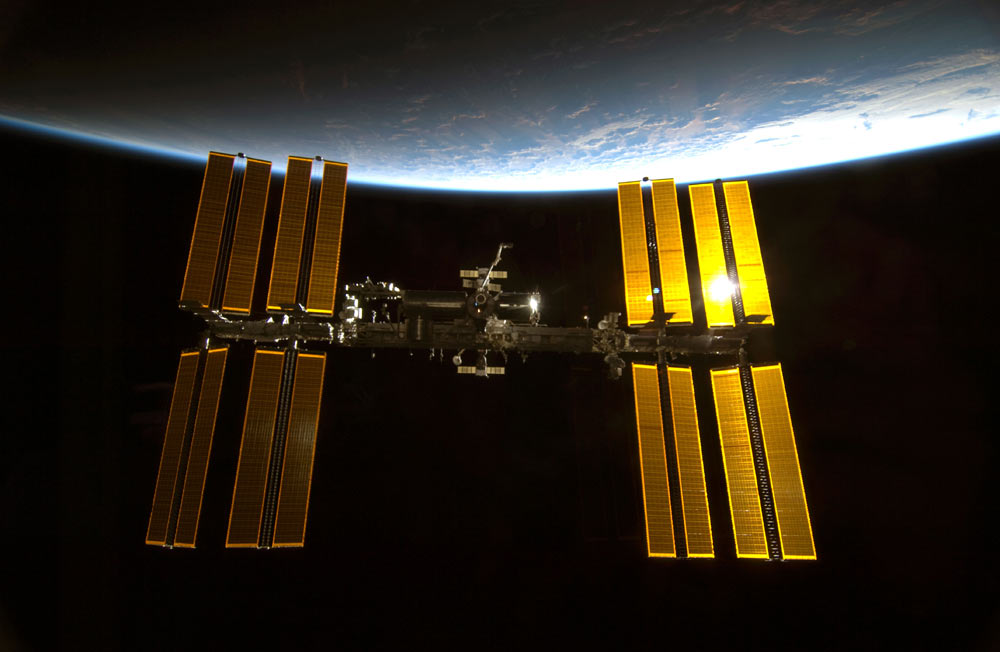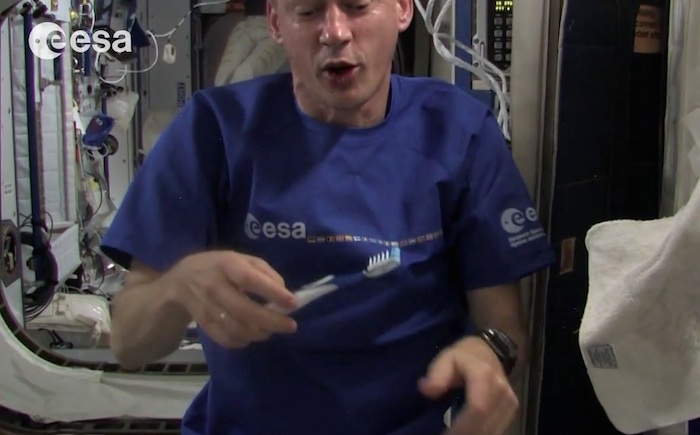Why Astronauts Need Good Teeth in Space (Video)

Brushing your teeth is not just a daily chore for people on Earth. Good teeth are vital for astronauts in space, but not for reasons you might think.
In new video about astronauts and their teeth, the European Space Agency took the streets to find out what people across Europe thought are the reasons spaceflyers need to keep their pearly whites in good shape.
While ESA officials revealed the surprising answer to space dental health in the video's end, some public answers ranged from the sensible to outright odd.
"I think in space the circumstances are different and that your bones lose calcium, and then your teeth become bad more quickly," responded one Dutch-speaking interviewee.
Astronauts do lose bone density while living in space, but that isn't the reason they need to take care of their teeth. Other interviewees came up with more creative reasons for astronaut dental care.
"Because it is weightlessness, there is no traction between the food and the teeth," said a person interviewed in Brussels, Belgium. "So I think it is very hard, very difficult to make the food digestible in the stomach."
Another respondent thought speed might be a factor.
Breaking space news, the latest updates on rocket launches, skywatching events and more!
"Because of the speed you are travelling with? I don't know," said one interviewee in Maastricht, Netherlands.
Though he seemed unsure, the Dutch respondent actually wasn't far off from the real answer. Astronauts are required to have good teeth because of the extreme conditions created by launch and landing, ESA officials said. [Quiz: The Reality of Life in Space]
"In fact, astronauts need good teeth because the acceleration forces and vibrations during a flight into space can be very strong," an ESA narrator says in the video. "During the launch phase, an astronaut has to endure a force of up to four times their own body weight. Ill-fitting dental fillings could become loose or fall out, and the atmospheric pressure change may be painful when cavities are present."
Good dental hygiene does not stop on the ground. Spaceflyers need to continue taking care of their teeth while living on board the orbiting laboratory in preparation for their return to the surface of the Earth.
When space station residents are done with their time in orbit and return home, it's also a violent trip. The Russian Soyuz capsule responsible for taking spaceflyers to and from the $100 billion laboratory is still speeding at about 6.2 miles per hour (10 km/h) when it touches down.
So if you have hopes to be an astronaut, don't forget to brush your teeth each day. It's a good practice whether you live on Earth or not.
Follow staff writer Miriam Kramer @mirikramer . Follow us @Spacedotcom, Facebook or Google+. This article was first published on SPACE.com.

Miriam Kramer joined Space.com as a Staff Writer in December 2012. Since then, she has floated in weightlessness on a zero-gravity flight, felt the pull of 4-Gs in a trainer aircraft and watched rockets soar into space from Florida and Virginia. She also served as Space.com's lead space entertainment reporter, and enjoys all aspects of space news, astronomy and commercial spaceflight. Miriam has also presented space stories during live interviews with Fox News and other TV and radio outlets. She originally hails from Knoxville, Tennessee where she and her family would take trips to dark spots on the outskirts of town to watch meteor showers every year. She loves to travel and one day hopes to see the northern lights in person. Miriam is currently a space reporter with Axios, writing the Axios Space newsletter. You can follow Miriam on Twitter.

